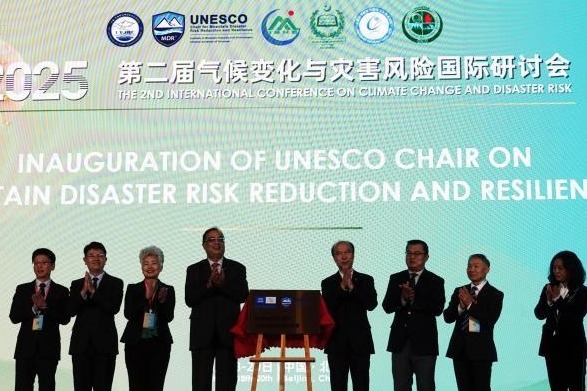Minister commends China's improvements in workplace safety, emergency management


China has experienced a significant drop in casualties from workplace accidents and natural disasters thanks to a reinforced emergency management system following an institutional reshuffle in 2018, said Wang Xiangxi, minister of emergency management.
Casualties from workplace accidents across the country went down 46.9 percent from their level in 2017, the minister told reporters in the Great Hall of the People in Beijing on the sidelines of the ongoing first session of the 14th National People's Congress on Tuesday.
The number of people killed or missing in natural disasters since 2018 went down 54.3 percent from the average of the previous five years, he added.
In the country's institutional reshuffle in 2018, 13 coverage areas under 11 government bodies, mostly related to disaster relief, were shifted to the newly established Ministry of Emergency Management, including fire control.
The reshuffle has yielded significant results, as it "has made the country's emergency management system more systematic, holistic, and coordinated", the minister said, adding the reform has addressed the overlapping responsibilities of different government bodies and made rescue operations more concerted and well-coordinated.
Previously, more attention was paid to rescue and disaster prevention is relatively neglected, he said, but now rescue and risk control are considered equally important. More preparations are made based on risk assessment, and some forces are dispatched to areas with risks so rescuers can respond rapidly in case of disasters.
He said China has seen the capacity of its national fire and rescue forces strengthened in the past five years, and is now capable of coping with different types of emergency situations.
Operations of the team have been strongly supported by civilian rescue teams and the army, he added.
Wang also noted a significant decline in the number of serious accidents, which are those that cause at least 10 deaths, seriously injure at least 50, or result in direct economic losses of more than 50 million yuan.
In the past five years, the country on average registered about 15 such accidents a year, he said. Last year, the number reached a record low of 11.
In the 10 years before the 18th National Congress of the Chinese Communist Party in 2012, however, more than 60 such accidents happened every year.
He emphasized safe production in the country remains "complicated", as there are a large number of high-risk enterprises in operation.
For instance, the production value of China's chemical sector covers 40 percent of the world's total. The number of coal mines across the country stands at over 4,400, along with many other mines. The country's urban natural gas pipes stretch 1 million kilometers.
The minister vowed to implement a series of measures to further enhance workplace safety, including screening for safety hazards in key industrial sectors, he said. Any violations found will need to be rectified within a definite time, and those responsible for major accidents will be seriously held accountable.
He said the ministry will dispatch expert groups to enterprises in high-risk industries to help them avoid hazards and enhance safety management.
Efforts will also be made to promote the application of intelligent machinery so fewer people will have to be engaged in high-risk operations.
- Xi congratulates Rodrigo Paz Pereira on election as president of Bolivia
- Highlights of news conference on CPC plenary session
- Chinese hospital achieves breakthrough in quadriplegia treatment
- AI-powered bionic jellyfish robot dives into deep-sea exploration
- Ski season opens early in Zhangjiakou
- Frost scenery transforms Hebei mountains into silvery world



































